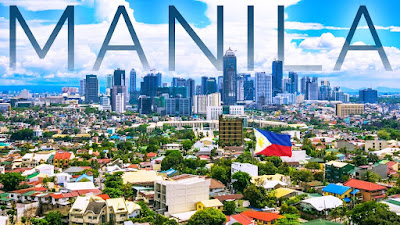Manila
is the capital city of the Philippines and one of the 16 cities that make up Metro Manila, the National Capital Region of the country. Here's a comprehensive overview of Manila with various details:
Geography and Location:
Manila is located on the western side of Luzon, the largest island in the Philippines. It is situated along the eastern shore of Manila Bay and lies to the west of Quezon City, the most populous city in the Philippines.
History:
- Manila has a rich history dating back to the pre-colonial period when it was a thriving settlement.
- The city was colonized by the Spanish in the 16th century and became a key trading post in the Spanish East Indies.
- It played a crucial role during World War II and was heavily damaged during the Battle of Manila in 1945.
Culture and Attractions:
- Manila is known for its diverse cultural heritage, influenced by Spanish, American, Chinese, and indigenous cultures.
- Historical sites include Intramuros, a walled city built during the Spanish colonial period, and Rizal Park, dedicated to the national hero, Jose Rizal.
- The National Museum of the Philippines, the Cultural Center of the Philippines, and various churches and cathedrals contribute to the city's cultural scene.
Economy:
- Manila is the economic and commercial hub of the Philippines, hosting the headquarters of many multinational corporations and financial institutions.
- It has a diverse economy with industries such as manufacturing, finance, technology, and services.
Transportation:
- Ninoy Aquino International Airport, located in Manila, serves as the primary gateway to the Philippines.
- The city has an extensive public transportation system, including buses, jeepneys, taxis, and the Manila Light Rail Transit System.
Education:
- Manila is home to several prestigious educational institutions, including the University of Santo Tomas, Ateneo de Manila University, and De La Salle University.
Population and Demographics:
- As of my last knowledge update in January 2022, Manila had a population of over 1.7 million people.
- The city is characterized by a diverse population with various ethnic and cultural backgrounds.
Government:
- Manila is an independent city, separate from any province, and it serves as the capital of the Philippines.
- The city has its mayor and city council responsible for local governance.
Climate:
- Manila has a tropical wet and dry climate with three distinct seasons: Tag-init (hot dry), Tag-ulan (rainy), and Tag-lamig (cool dry).
- The city experiences typhoons during the rainy season.
Challenges:
- Like many major cities, Manila faces challenges such as traffic congestion, pollution, and issues related to urbanization.
When you are in Manila is the first of those who come to mind chaos. Each traffic that clog the noisy jeepney with traffic monster, horn sounds, full of rubbish urine smelling streets, naked people lying on the roadside, begging children, street vendors. Leave the poor life of the village, the town where the city of refuge were heaps of people with hope, despite all Asia 'in most expat's (country settled foreigners) living in is one of the capital.
They have Malay, Spanish, American, Chinese and Arab culture, a city under the influence of blended Manila, the remains of old churches and cathedrals, Spanish era, stands out with its colorful nightlife and shopping. Skyscrapers, plazas and luxury hotels and nightclubs while addressing the Makati area middle and higher budget travelers, Adriatico Street is suitable for low budget backpackers. Many hostels around both areas, hotels, restaurants, night clubs and bars.






No comments:
Post a Comment